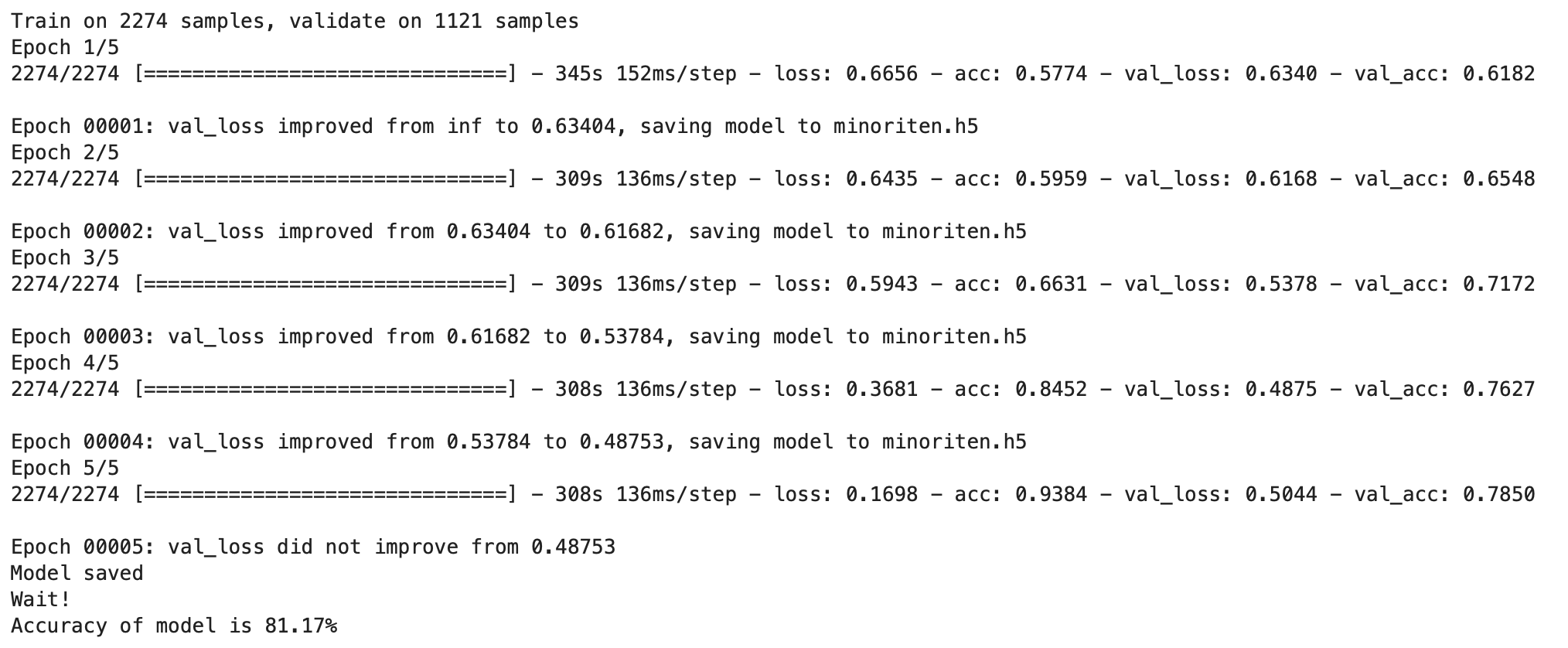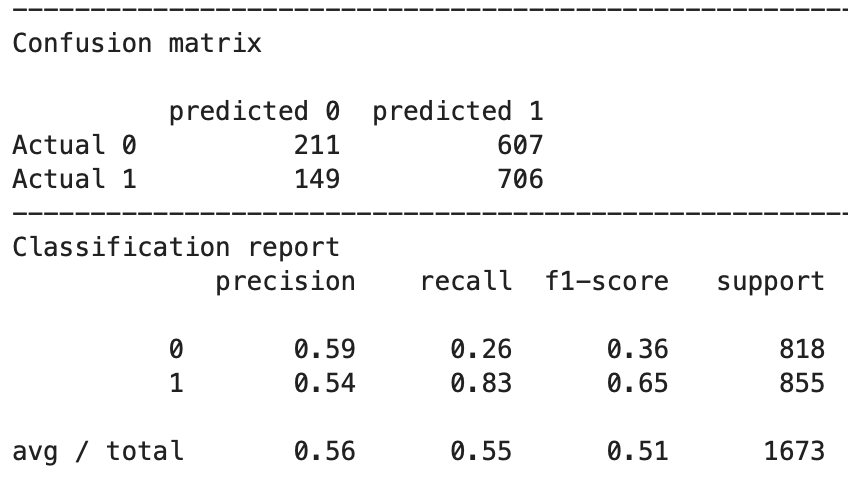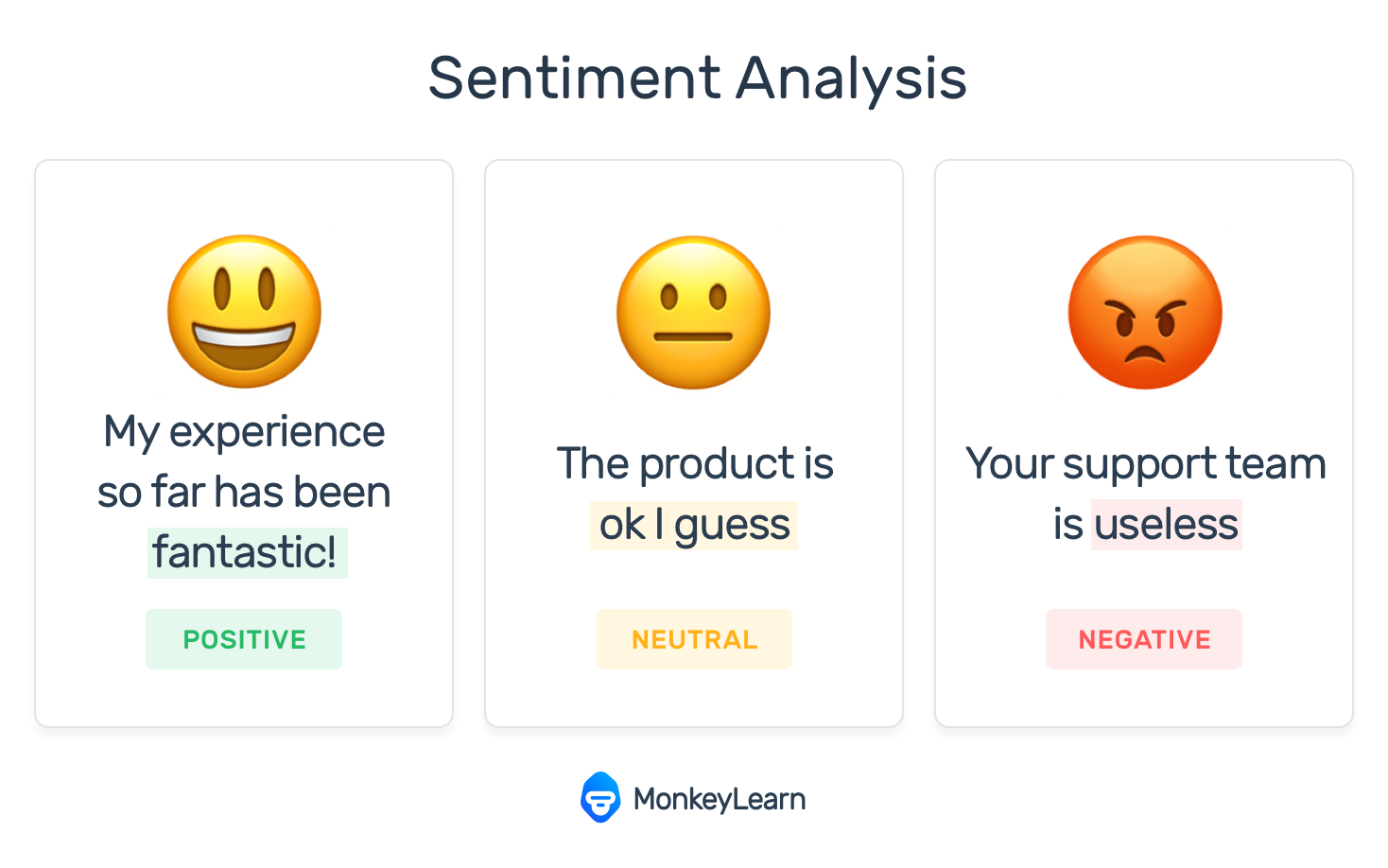40 sentiment analysis without labels
Is it possible to do Sentiment Analysis on unlabeled data ... - Medium 1) Use the convert_label () function to change the labels from the "positive/negative" string to "1/0" integers. It is a necessary step for feeding the labels to a model. 2) Split the data into... How to Do Twitter Sentiment Analysis Without Breaking a Sweat? Sentiment Analysis (also known as Emotion AI) is the process of measuring the tone of writing and evaluating whether it is positive, neutral, or negative. Sentiment analysis is based on solutions developed in the field of natural language processing (NLP).
Where can I find datasets for sentiment analysis which don't ... - Quora Create a list of emoticons having positive sentiment and another list for negative sentiments. Then if a tweet contains only (or mostly) emoticons of positive sentiment then label it as positive tweet and vice verse for negative label. It is not necessary that you can label all the tweets in this way as every tweet does not contain emoticons.

Sentiment analysis without labels
Top 10 best free and paid sentiment analysis tools - Awario 4. Brandwatch. Best for: market and audience research. Brandwatch also specializes in online data analysis, but compared to Social Searcher it does it on a much bigger scale. The tool assigns one of the six labels based on its sentiment analysis: anger, disgust, fear, joy, surprise, or sadness. Is it possible to do sentiment analysis of unlabelled text using ... Essentially, no - you can't perform sentiment analysis without some labeled data. Without labels, of some sort, you have no way of evaluating whether you're getting anything right. So, you could just use this sentiment-analysis function: get_sentiment(text): return random.choice(['positive', 'negative']) Woohoo! How to Succeed in Multilingual Sentiment Analysis without ... - Medium You can follow the proposed process of sentiment analysis in the figure below. First, we preprocess our texts in a foreign language (remove urls, emojis, digits and punctuation marks) and translate...
Sentiment analysis without labels. Sentiment Analysis for AI by LabelMe Sentiment Analysis for AI by LabelMe Neural networks trained to detect sentiment can be used to identify negative feedback and automatically respond to it by offering promo codes or discounts. Or you can use the model to study the audience: automatically calculate statistics of reactions to +90 534 761 9104 Services Course Contacts Prices Sentiment Analysis using Python [with source code] Steps to build Sentiment Analysis Text Classifier in Python 1. Data Preprocessing As we are dealing with the text data, we need to preprocess it using word embeddings. Let's see what our data looks like. import pandas as pd df = pd.read_csv("./DesktopDataFlair/Sentiment-Analysis/Tweets.csv") We only need the text and sentiment column. Sentiment Analysis in Python: TextBlob vs Vader Sentiment vs Flair vs ... Sentiment analysis is the task of determining the emotional value of a given expression in natural language. It is essentially a multiclass text classification text where the given input text is classified into positive, neutral, or negative sentiment. The number of classes can vary according to the nature of the training dataset. Sentiment Analysis | Comprehensive Beginners Guide - Thematic Sentiment analysis is used to determine whether a given text contains negative, positive, or neutral emotions. It's a form of text analytics that uses natural language processing (NLP) and machine learning. Sentiment analysis is also known as "opinion mining" or "emotion artificial intelligence". Sentiment Scoring
Top 12 Free Sentiment Analysis Datasets | Classified & Labeled Finding The Right Sentiment Analysis API. Repustate's sentiment analysis platform has been trained on sentiment analysis datasets in multiple industries. The engine processes millions of reviews per day for hundreds of clients across the globe. It enables real-time social media sentiment analysis and does so in 23 languages, natively. It provides topic-driven and aspect-based sentiment analysis and has a processing speed is 1,000 reviews per second. Sentiment Analysis: The What & How in 2022 - Qualtrics Machine learning-based sentiment analysis A computer model is given a training set of natural language feedback, manually tagged with sentiment labels. It learns which words and phrases have a positive sentiment or a negative sentiment. Once trained, it can then be used on new data sets. Evaluating Unsupervised Sentiment Analysis Tools Using Labeled Data Sentiment analysis also exists in unsupervised learning, where tools/libraries are used to classify opinions with no cheatsheet, or already labeled output. This makes it somewhat hard to evaluate these tools, as there aren't any pre-prepared answers. Therefore, deciding what tool or model to use to analyze the sentiment of unlabeled text data ... Sentiment140 dataset with 1.6 million tweets | Kaggle Sentiment analysis with tweets Sentiment140 dataset with 1.6 million tweets Data Code (326) Discussion (19) Metadata About Dataset Context This is the sentiment140 dataset. It contains 1,600,000 tweets extracted using the twitter api . The tweets have been annotated (0 = negative, 4 = positive) and they can be used to detect sentiment . Content
Sentiment Analysis with VADER- Label the Unlabelled Data VADER is a lexicon and rule-based sentiment analysis tool. It is used to analyze the sentiment of a text. Lexicon is a list of lexical features (words) that are labeled with positive or negative... rafaljanwojcik/Unsupervised-Sentiment-Analysis - GitHub Unsupervised-Sentiment-Analysis. How to extract sentiment from the data without any labels. Repo for towardsdatascience article: about Unsupervised Sentiment Analysis on Polish Sentiment Dataset. Analyzed dataset comes from wonderful article by Szymon Płotka: . 15 of The Best Sentiment Analysis Tools - MonkeyLearn Blog The best sentiment analysis software and tools in 2022. MonkeyLearn. Lexalytics. BrandWatch. Social Searcher. MeaningCloud. Discover more. python - Sentiment Analysis Feature Selection based on word to label ... In my sentiment analysis on a dataset of 194k review texts with labels (class 1-5), I am trying to reduce the features (words) based on a word to label correlation by which a classifier can be trained. Using sklearn.feature_extraction.text.CountVectorizer with default parameterization, I get 86,7k features.
Sentiment Analysis: First Steps With Python's NLTK Library Getting Started With NLTK. The NLTK library contains various utilities that allow you to effectively manipulate and analyze linguistic data. Among its advanced features are text classifiers that you can use for many kinds of classification, including sentiment analysis.. Sentiment analysis is the practice of using algorithms to classify various samples of related text into overall positive and ...
Unsupervised Sentiment Analysis. How to extract sentiment from the data ... O ne of the common applications of NLP methods is sentiment analysis, where you try to extract from the data information about the emotions of the writer. Mainly, at least at the beginning, you would try to distinguish between positive and negative sentiment, eventually also neutral, or even retrieve score associated with a given opinion based only on text.
How to perform sentiment analysis and opinion mining - Azure Cognitive ... You can also make example requests using Language Studio without needing to write code. Sentiment Analysis. Sentiment Analysis applies sentiment labels to text, which are returned at a sentence and document level, with a confidence score for each. ... Sentiment analysis returns a sentiment label and confidence score for the entire document, and ...
Tutorial: Fine-tuning BERT for Sentiment Analysis - by Skim AI This will return logits. logits = model (b_input_ids, b_attn_mask) # Compute loss and accumulate the loss values loss = loss_fn (logits, b_labels) batch_loss += loss. item total_loss += loss. item # Perform a backward pass to calculate gradients loss. backward # Clip the norm of the gradients to 1.0 to prevent "exploding gradients" torch. nn. utils. clip_grad_norm_ (model. parameters (), 1.0) # Update parameters and the learning rate optimizer. step scheduler. step # Print the loss values ...
Sentiment Analysis: What is it and how does it work? - Awario Let's take a look at each of these sentiment analysis models. 1. Supervised machine learning (ML) In supervised machine learning, the system is presented with a full set of labeled data for training. This dataset consists of documents whose sentiment has already been determined by human evaluators (data scientists).
Free Online Sentiment Analysis Tool - MonkeyLearn Sentiment analysis benefits: 👍. Quickly detect negative comments & respond instantly. 👍. Improve response times to urgent queries by 65%. 👍. Take on 20% higher data volume. 👍. Monitor sentiment about your brand, product, or service in real time.
Getting Started with Sentiment Analysis using Python There are more than 215 sentiment analysis models publicly available on the Hub and integrating them with Python just takes 5 lines of code: pip install -q transformers from transformers import pipeline sentiment_pipeline = pipeline ("sentiment-analysis") data = ["I love you", "I hate you"] sentiment_pipeline (data)
Repustate IQ Sentiment Analysis Process: Step-by-Step Step 1: Data collection. This is one of the most important steps in the sentiment analysis process. Everything from here on will be dependent on the quality of the data that has been gathered and how it has been annotated or labelled. API Data - Data can be uploaded through Live APIs for social media.
How to label sentiment using NLP? - Data Science Stack Exchange Simplest Approach - Use textblob to find polarity and add the polarity of all sentences. If the overall polarity of tweet is greater than 0 , then it's positive and if less than zero , you can label it as negative. Use of lexicons- One can use MQPA lexicon , to find the presence of negative and positive words and similarly , you can compute the ...
How to label text for sentiment analysis — good practices If you are working on sentiment analysis problems, be careful about text labelling. If you have never labelled text in your life, this is a good exercise to do. If you only rely on clean/processed text to learn, you can face a problem where the problem is not your model, but the information that you are using to train it.
How to Succeed in Multilingual Sentiment Analysis without ... - Medium You can follow the proposed process of sentiment analysis in the figure below. First, we preprocess our texts in a foreign language (remove urls, emojis, digits and punctuation marks) and translate...
Is it possible to do sentiment analysis of unlabelled text using ... Essentially, no - you can't perform sentiment analysis without some labeled data. Without labels, of some sort, you have no way of evaluating whether you're getting anything right. So, you could just use this sentiment-analysis function: get_sentiment(text): return random.choice(['positive', 'negative']) Woohoo!
Top 10 best free and paid sentiment analysis tools - Awario 4. Brandwatch. Best for: market and audience research. Brandwatch also specializes in online data analysis, but compared to Social Searcher it does it on a much bigger scale. The tool assigns one of the six labels based on its sentiment analysis: anger, disgust, fear, joy, surprise, or sadness.

















Post a Comment for "40 sentiment analysis without labels"